11/03/2018 05:00 am ET
Teachers Are Serving As First Responders To The Opioid Crisis
“My job as a teacher is to be a first
responder to poverty,” says Greg Cruey, a middle school teacher at
Southside K-8 school. “If my students learn other stuff too, that’s
great.”
By Rebecca Klein
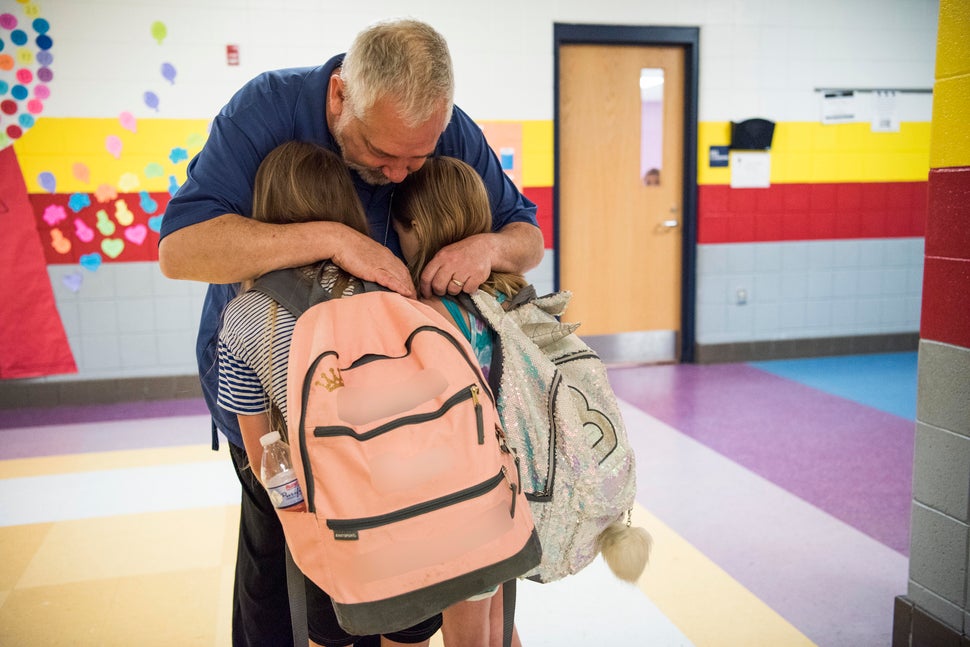
Damon Dahlen/HuffPost
Greg Cruey, a teacher at Southside K-8 school, greeting students in the morning. This photo has been edited to protect the identities of the subjects.
WAR, W.Va. ― Middle school teacher Greg Cruey can explain the most harrowing details of his students’ lives with matter-of-fact precision.
That smart sixth-grader who had her hand raised last period? She’s homeless and has, in the past, been suicidal. That middle school student who seemed on edge during class? As a young child, his parents used him to make pornography; they needed the money for their drug addictions. That sassy eighth-grader with the long hair? Her mom just got out of jail and seems to be allowing her to smoke pot in the house.
Many of these details are ones that, after 15 years in the classroom, Cruey has learned to pick up on, through careful tracking: what students are wearing, hunger levels and emotional states. But sometimes students will offer up these deeply personal details after class with shrugs, as if it’s information as casual as what they ate for lunch. When Cruey still has questions, he will glean information through listening to the constant murmur of student gossip in hallways, tracking social media posts and keeping his ear to the ground at church.
It’s Cruey’s job to keep track of these particulars, even more than lesson planning or standardized test preparation.
“My job as a teacher is to be a first responder to poverty,” said Cruey, a 58-year-old middle school social studies teacher at Southside K-8 school. “If my students learn other stuff, too, that’s great.”
Cruey’s school, in War, West Virginia, in McDowell County, has long been held up as a living example of how poverty can limit educational attainment. So when the opioid crisis hit, it hit McDowell County particularly hard. In 2014, the county led the state in opioid-related hospitalizations. In 2016, the Centers for Disease Control and Prevention ranked McDowell County as second-most at-risk in the country for an HIV outbreak due to intravenous drug use.
It’s why, over the course of Cruey’s years in the classroom, he has become used to stories of families torn apart over drugs, as parents and guardians shuffle between hospitals and jails. He cites estimates that nearly half of students live with someone other than their parents. Others are being raised by grandparents, relatives, friends and foster parents.
In War, atypical family structures are the norm.
Nelson Spencer, who retired last month as superintendent of McDowell schools, said that in some of the county’s schools, as many as 40 percent of students don’t live with their parents. And though many of these arrangements are informal, with students casually bouncing between the homes of family members and friends, West Virginia has seen a spike in foster care entrances compared with the U.S. average. In 2016, there were 1,221 foster care entrances per 100,000 youth, compared with the U.S. average of 369.
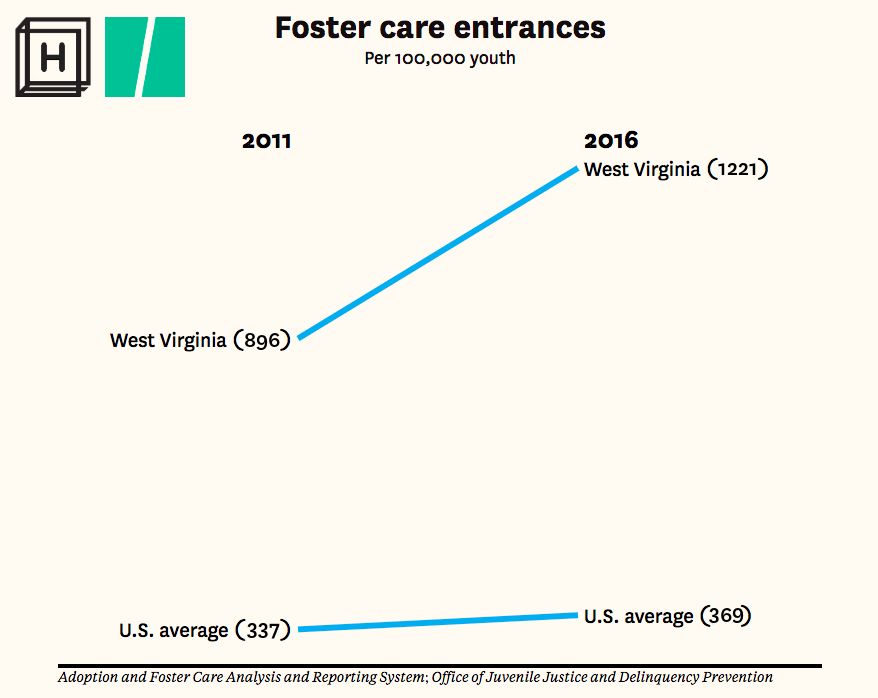
It’s a pattern that teachers and school administrators are seeing emerge in many communities, as some states have seen drastic spikes in the number of foster care entrances in recent years. Around the country, the number of kids in foster care increased by about 10 percent from 2012 to 2016. At the same time, the number of children being removed from their homes because of parental drug use has also increased, according to data from the Adoption and Foster Care Analysis and Reporting System.
And in many places, teachers like Cruey are on the front line of this crisis, working to counteract the effects this trauma has on students’ lives.
For this story, HuffPost/Hechinger Report spent several days shadowing Cruey at his school at the end of the last school year. The time spent showed that teachers, just as much as medical professionals and addiction counselors, serve as first responders to the opioid crisis. Cruey’s story is unique ― in a particular area where rates of addiction and poverty are high ― but it’s also representative of what teachers are experiencing in many communities.
Only 58 percent of children involved in the foster care system finish high school by 19, compared with 87 percent of the general population. Helping deeply traumatized students to succeed in school can be a tough battle.
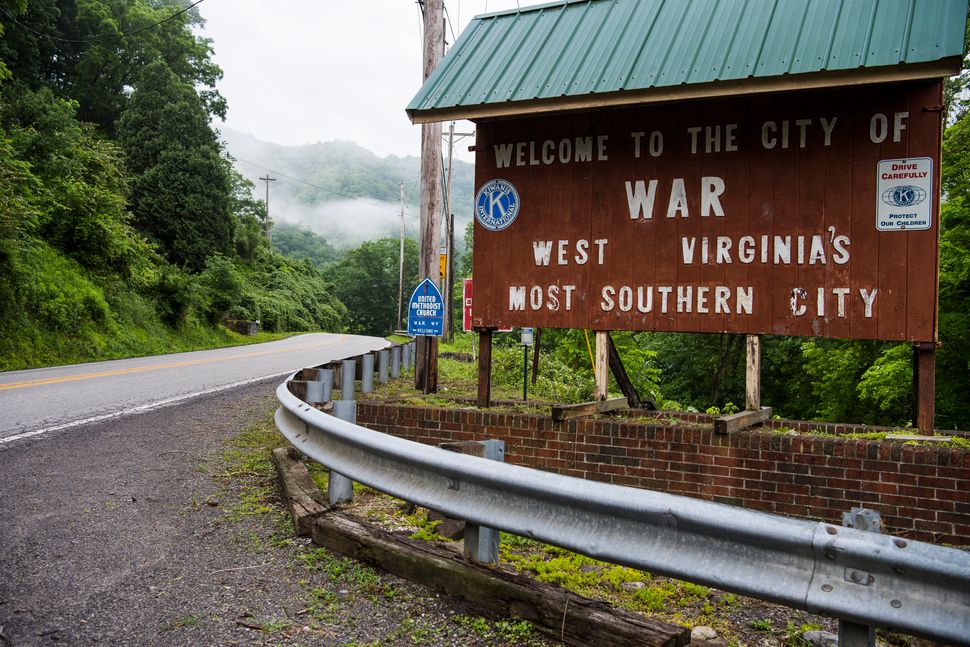
Damon Dahlen/HuffPost
The decline of coal production started a downward spiral in War, West Virginia.
A Cycle Of Crisis
War was once a center for coal production ― a town where “everybody worked” ― but it spiraled downward as the industry declined.. By 1990, the population in McDowell had fallen to about 35,000 people after a high of nearly 100,000 in 1950.
For schools in the area, this means frequent visits from the Department of Child Protective Services and an abnormally small number of students who live with mom and dad, Cruey said. It also means having students at the center of a crisis that they did nothing to help create. It means high rates of students in special education ― about 40 percent of middle school students have individualized education plans ― a phenomenon Cruey attributes, in part, to the high rates of pregnant mothers on drugs.
On the outside, Southside K-8 school is almost idyllic. Plush mountains surround the recently renovated building, there’s a new jungle gym where young kids swing around and an impressive green football field sits nearby.
But upon closer inspection, the subtle contours of the opioid crisis are undeniably present.
The football field, once a source of community pride, previously served as a place where student-athletes and local coaches could ascend to the status of community legends. It’s where Homer Hickam, famed NASA engineer portrayed in the movie “October Sky,” tried his hand at sports before moving on to rocket science. It was previously attached to Big Creek High School.
But in 2010, the school was closed down over a decline in student enrollment. In 2015, the abandoned school was burned down in an act of arson.
Southside K-8 students now use the field for their football team, but most of the time they can barely get enough students to fill the roster.
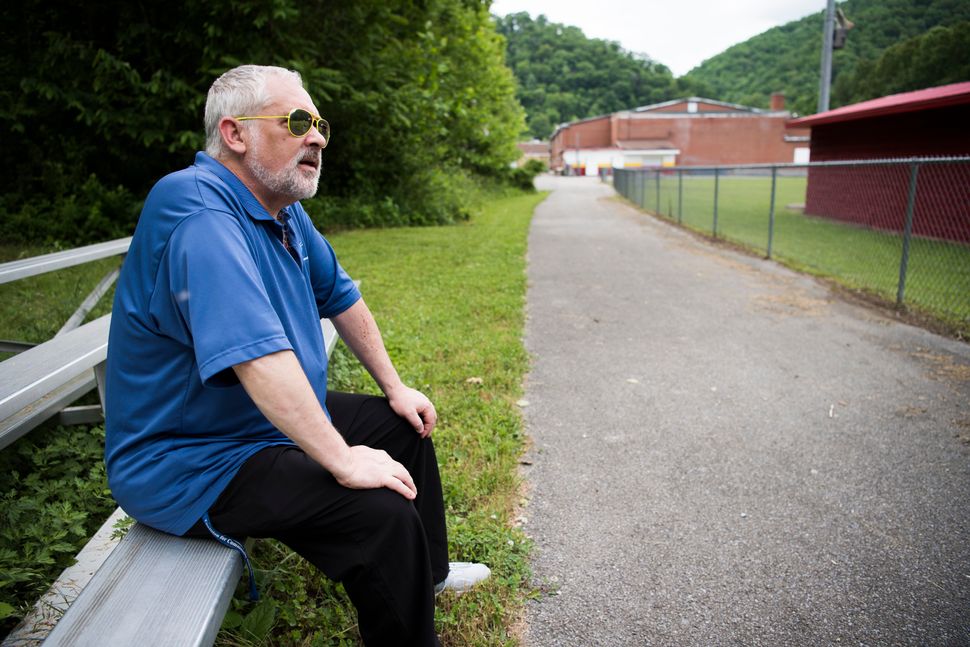
Damon Dahlen/HuffPost
Teacher Greg Cruey keeps track mentally of where all his students are living and in what circumstances.
Cruey, a gregarious man with warm eyes and a friendly smile, attributes the team’s lack of stability to his students’ transience and an overall drain in population. Families are constantly shuffling in and out of the area in hopes of finding a coveted job in the coal mines. And as students with drug-using parents bounce between staying with grandparents, great-grandparents, foster parents and neighbors, Cruey never knows when a student will suddenly stop showing up or will come back after months away.
As a teacher, that means Cruey has to learn to roll with the punches, even though those punches so rarely involve the stuff he was trained to do, like devise lessons, assign homework and monitor learning progress. Cruey maintains a constant mental tracker of which students are living where, which students recently left, and which students are on their way out. He has directly called Child Protective Services at times.
On his way to school in the morning ― he lives about a 30-minute drive away in Virginia ― he watches for parents hitchhiking on the side of the road. He keeps track of which boys are dating which girls ― lamenting that he often sees kids sexually active at young ages, without an understanding of the consequences. Several years ago the school had a pregnant fifth-grader ― she ended up getting an abortion.
It’s inevitable that sometimes these traumas make their way into the classroom.
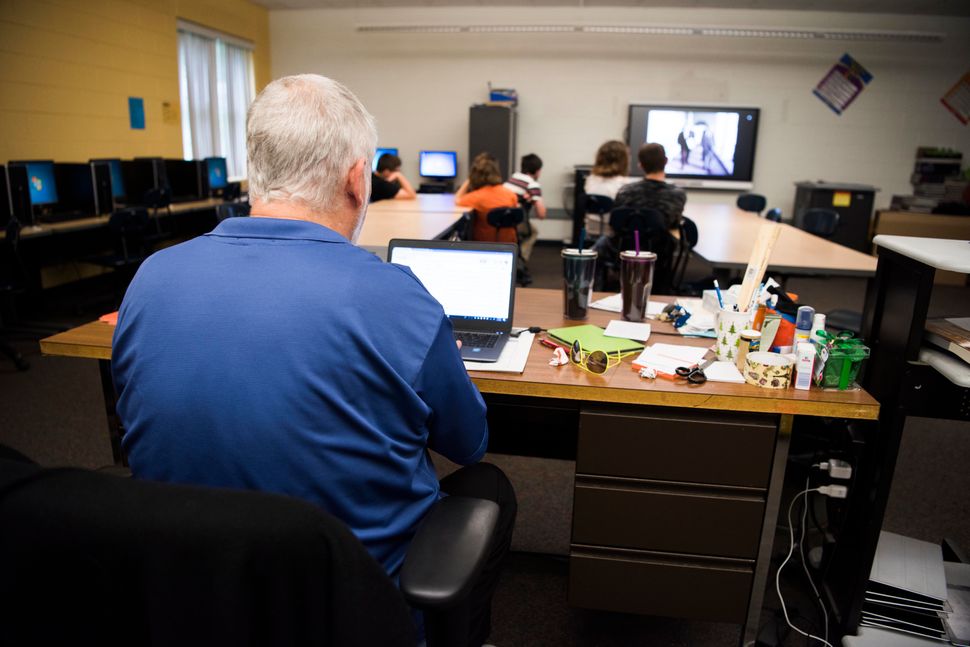
Damon Dahlen/HuffPost
Lessons in the classroom sometimes have to be customized for kids who face myriad crises in young their lives.
During a second period class on a Thursday morning last May, Cruey taught a lesson on Franklin Delano Roosevelt and the politics of the New Deal. The class was mostly engaged, aside from a boy laying his head on a desk, attempting to sleep. Cruey let him. It’s not something an educator would typically allow ― especially one like Cruey, who closely monitors and stomps out classroom misbehavior. But this time Cruey let it slide. He knew enough to know the boy needed the rest.
“He was taken by Child Protective Services two weeks ago, and we didn’t think we’d ever see him again, and he came back,” said Cruey of the boy after class. “He’s one of those situations where ― CPS will show up here because this is the one spot where they don’t have to confront the parents to get the kid. They know our address.”
After school and on weekends, too, the work continues. Cruey’s wife, Cheryl, who was principal of Southside K-8 until retiring at the end of the 2017-2018 school year, mentors three siblings in the district. Cruey’s involved, too. He and Cheryl started helping out after the family of seven spent a winter together in a home where the only adequate heat was a fireplace.
About twice a month, Cruey and his wife take the kids shopping, to church and out for pizza. They bring them bags of food and check on them throughout the school day.

Damon Dahlen/HuffPost
Greg Cruey and his wife, Cheryl, a former principal, often work together to help kids in need.
But sometimes mentoring is not enough. Sometimes the pain of a child is so great that Cruey feels compelled to do more. Several years ago, Cruey ― who has grown children from a previous marriage ― was in discussions to adopt one of the school’s students, who was in fifth grade at the time.
The student was one of six children, born to a single mother with an addiction to drugs. The eldest sibling, who is now in her 20s and whom Cruey’s wife had had as a student, was in prison at the time. The second eldest was on drugs. The three youngest ended up getting adopted by a local family, leaving a middle boy to mostly fend for himself.
Discussions about an adoption were moving smoothly along until the boy’s legal stepfather was killed, and the boy was granted survivor’s benefits, Cruey said. Suddenly mom wanted to be involved again, and the adoption process was halted.
Six months later, Child Protective Services took the child away and sent him to live with relatives in a different part of the state.
“Occasionally we see him on Facebook. He’s maybe in the ninth grade now. As far as I can tell, he’s doing OK from this distance. His life has changed radically just from not being here,” Cruey said.
Pride And Pain
Amid these issues, there are stories of hope, joy and pride. The district has worked hard to improve its academic outcomes, and there certainly have been improvements. Overall, there’s been an increase in graduation rates and a decrease in dropouts. Spencer, the former superintendent, also points to a decline in teen pregnancies.
“I see a growth in our students. They are proud of where they come from. They’re proud of their heritage. They look people in the eye when they speak,” Spencer said. “If given the right opportunity, our kids can compete with anyone.”
But Cruey isn’t sure that many of his students have the luxury of dreaming about the long term.
“For many of them, the horizon is much closer than ‘When I grow up.’ They think in terms of the instability of their life circumstances and who they’ll live with next year, whether they can get a better deal for themselves by living with grandma,” Cruey said.
Still, he has high hopes for his kids. He hopes they graduate high school. He hopes they develop a skill. He hopes they experience a life that includes love and support. And he hopes they stay in the area and help revitalize it, stemming the tide of transience and instability.
He hopes the same for their parents and those in his community. He has seen the opioid crisis terrorize generations, turning grandparents into caretakers at ages too old, and siblings into caretakers at ages too young.
The cycle plays out on a Friday afternoon in May.
It’s the last period of the day before the weekend, and students are squirming in their seats with anticipation. Over the loudspeaker, a voice calls for “Friday kids” to come to the cafeteria. A group of students suddenly rushes the hallways.

Damon Dahlen/HuffPost
Greg Cruey says his students are realistic about their lives. “For many
of them, the horizon is much closer than ‘When I grow up.’”
The “Friday kids” club is not one kids want to join. “Friday kids,” as the school calls them, are those who are given a bag of food to take home for the weekend because otherwise they’d go hungry. It’s up to the students how much they want to share with their siblings.
A few minutes later, an older janitor comes to collect Cruey’s classroom trash. He wishes her a happy Friday.
“I wish it was,” she tells him.
A judge has just ruled that her grandchild can go back to living with her dad, who recently got out of jail for drugs, she explains between tears. Cruey offers to help her write a letter to appeal the decision.
Cruey doesn’t know what the students at Southside did in a previous life to be born poor in McDowell County. But he doesn’t see a realistic way to stop the cycle of pain, no matter how well he teaches or how many services the school provides.
“We really don’t make a dent in the most basic problems we have. We achieve some level of educational success. But there are limitations. Because the need is too broad.”
This story about the opioid crisis and foster care was produced as part of a series, “Twice Abandoned: How schools and child-welfare systems fail kids in foster care,” reported by HuffPost and The Hechinger Report, a nonprofit, independent news organization focused on inequality and innovation in education.


No comments:
Post a Comment